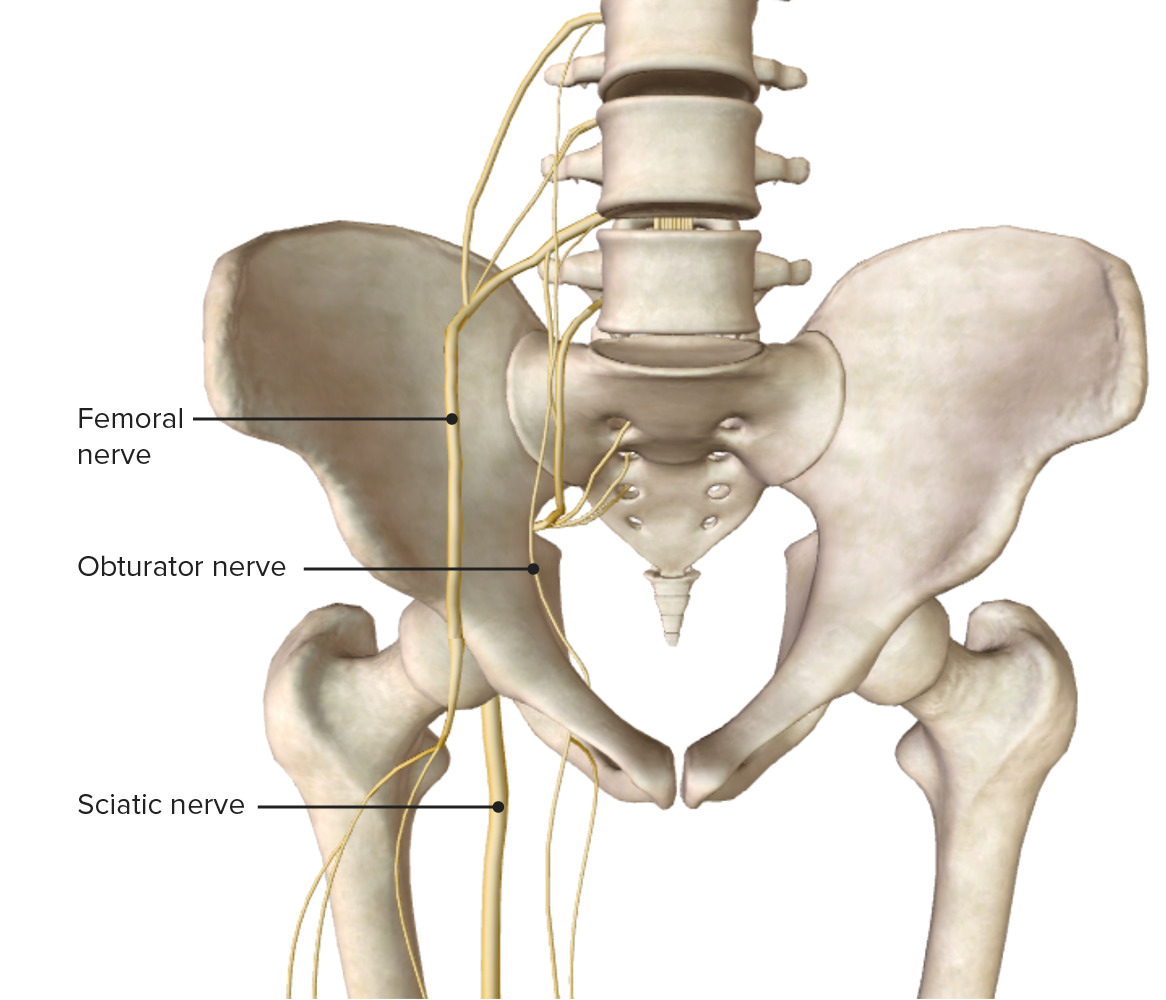Playlist
Show Playlist
Hide Playlist
Femoral Neck Fracture
-
Slides Classic fractures Special Surgery.pdf
-
Download Lecture Overview
00:01 Let's move on to a potential traumatic femoral neck fracture. 00:06 Long bone fractures can be deadly, particularly in elderly patients. 00:12 Generally speaking, femoral neck fractures occur when the patient falls on the lateral hip. 00:19 There's also usually assisted – associated twisted mechanism where the foot is stuck, but the body is actually twisting. 00:28 On physical examination, there may be obvious deformities, such as external rotation or a shortened extremity. 00:36 Remember, don't over-manipulate these on physical examination. 00:40 Sometimes, when the external injury is not obvious, patients often complain of groin pain, especially on weight-bearing. 00:49 And remember, particularly in traumatic situations, this may be open. 00:54 In other words, the skin overlying the fracture is actually lacerated. 01:00 These require urgent debridement because the joint can become infected. 01:07 Here's an image. 01:08 It’s quite classic of a proximal femoral neck fracture. 01:12 You notice – you notice that the acetabulum in the femoral head is intact. 01:16 However, the proximal femur is now fractured. 01:23 These generally require surgery. 01:26 It usually requires ORIF (open reduction internal fixation). 01:33 If your patient is extremely elderly, bedridden or very debilitated, remember, an open reduction and internal fixation of any major joint is a very, very complex procedure and associated oftentimes with significant blood loss. 01:49 If your patient is already bedbound or severely debilitated, there's always the option of non-operative management. 01:57 Here are some post-reduction films. 01:59 Clearly, you notice after the ORIF, the alignment looks great. 02:05 Very important concept. 02:06 Hope you're paying attention. 02:08 Fat embolism is associated with long bone fractures. 02:12 In fact, on a clinical scenario, when you're presented with a posttraumatic patient, with this constellation of symptoms, think fat embolism. 02:22 Let's review. 02:23 They include neurological abnormalities, altered mental status, for example, a classic petechial rash all over the body and variable hypoxia. 02:36 In fact, oftentimes, fat embolism patients are suspected of having a pulmonary embolism. 02:44 The etiology of fat embolism is not completely understood. 02:49 There's maybe introduction of fat globules into the systemic circulation when the bone is actually fractured. 02:57 Additionally, we think that there is an inflammatory process that leads to free fatty acids. 03:02 The jury is still out. 03:07 The management of fat embolism is high index of suspicion and mostly supportive. 03:12 We want to treat the hypoxia and the patient may require ventilator assistance if hypoxia is profound or worsening.
About the Lecture
The lecture Femoral Neck Fracture by Kevin Pei, MD is from the course Special Surgery.
Included Quiz Questions
Which of the following surgical options is CORRECT for treating femoral neck fractures?
- Open reduction internal fixation
- External fixation
- Internal fixation without reduction
- Observation alone
- Closed reduction and external fixation
The common physical findings of femoral neck fracture may include all of the following EXCEPT?
- Absent pulses of the affected extremity
- Shortened leg
- Groin pain
- Bruising
- Inability to walk
Customer reviews
5,0 of 5 stars
| 5 Stars |
|
1 |
| 4 Stars |
|
0 |
| 3 Stars |
|
0 |
| 2 Stars |
|
0 |
| 1 Star |
|
0 |
Very good overview of this topic, with highlight on serious pathology and management





